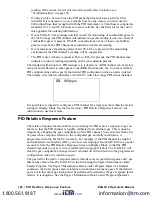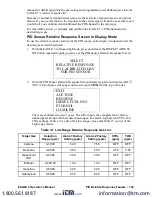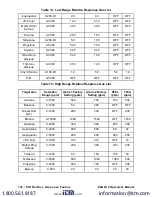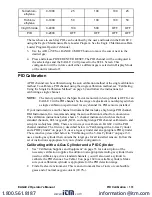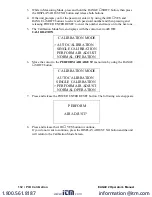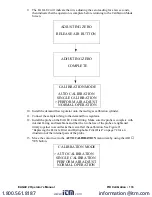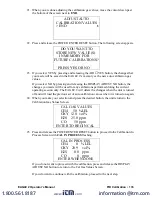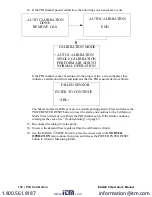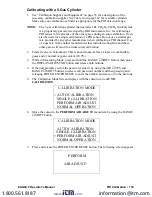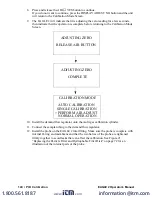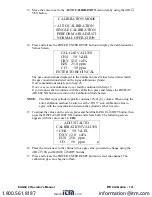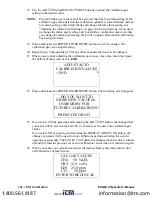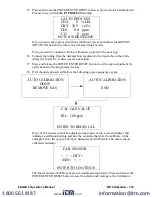
128 • PID Relative Response Feature
EAGLE 2 Operator’s Manual
reading. If the sensor doesn’t exit its warm up state after 5 minutes, see
“Troubleshooting” on page 146.
•
If using a probe, be sure to use the PID probe that does not have a particle filter
installed. If it is necessary to use a sample hose for any reason, you must use the
Teflon lined hose that is supplied with the PID instrument. A 5 foot hose is supplied as
standard. 10, 15, and 20 foot hoses are also available. See the Parts List at the end of
this appendix for ordering information.
•
If your EAGLE 2 is a multigas unit that is used for monitoring of combustible gases in
the %LEL range, the PID channel will indicate an upscale reading if one of a variety of
combustible gases is present. If %LEL concentrations of one of these combustible
gases is present, the PID channel may indicate an overscale reading.
•
If concentrations of methane greater than 10% LEL are present in the monitoring
environment, the PID channel’s reading will be suppressed.
•
The PID sensor will also respond to H
2
S, so if H
2
S is present, the PID channel may
indicate an upscale reading depending on the concentration present.
The standard calibration for a PID channel is to isobutylene. A PID channel can be factory
setup for and calibrated to other gases. Consult RKI Instruments, Inc. for other available
PID configurations and to specify the desired PID configuration when a unit is ordered.
The display screen below illustrates an EAGLE 2 with a low range PID sensor installed.
It is possible to temporarily configure a PID channel for a target gas other than the factory
setting in Display Mode. See the next section, “PID Relative Response Feature”, for
instructions to use this feature.
PID Relative Response Feature
The relative response feature enables you to change the PID sensor’s response to gas on
the fly so that the PID channel is roughly calibrated to an alternate gas. This is done by
temporarily changing the gas configuration of the PID channel. You can select from a list
of gases whose response relative to the configured gas, normally isobutylene, is
programmed into the EAGLE 2’s memory. For example, if the PID channel is setup for
and calibrated to isobutylene (IBL), you can select isopropyl alcohol (IPA) from a gas list
accessible from the PID Relative Response Screen in Display Mode so that the PID
channel responds to gas as if it were calibrated to isopropyl alcohol. The EAGLE 2 will
clear the gas configuration change when it is turned off and will return to the programmed
configuration when it is turned on again.
The gas list for the relative response feature includes several pre-defined gases and 1 gas
that can be entered into the EAGLE 2 in the field using the Eagle 2 Maintenance Data
Loader Program. The Eagle 2 Maintenance Data Loader Program Operator’s Manual
contains a chart of response factors relative to isobutylene for many gases. If the desired
gas is not in this chart, gas testing must be performed to determine the gas’ response factor
relative to isobutylene. See the Eagle 2 Maintenance Data Loader Program Operator’s
IBL 0.00ppm
www.
.com
information@itm.com
1.800.561.8187















